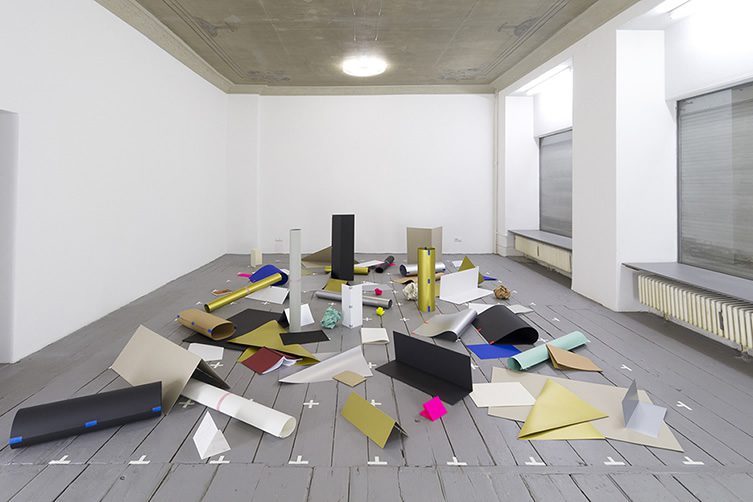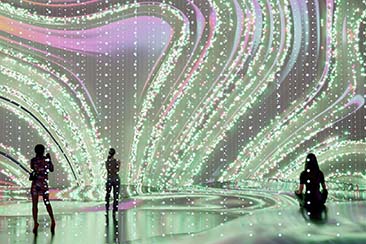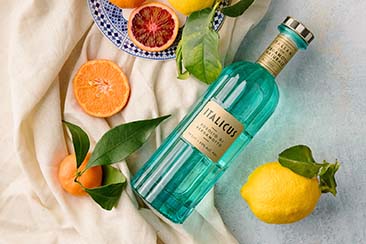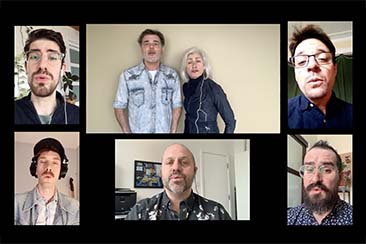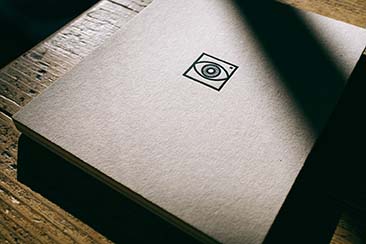Reality is a casual concept for Danish artist Tommy Støckel. Based in Berlin, Støckel toys with mathematical, sculptural and physical conventions – creating scenarios from primitive materials like paper, card and polystyrene cups; it’s science-fiction meets primary school workshops. Inspired by architects and writers just as much as fellow artists, the Dane’s work adds order to chaos as he reimagines proportions and dimensions – forcing the viewer to question their understanding of space and constructions.
Støckel’s high-brow concepts are painstakingly created, and each work drips a fanciful originality that is utterly irresistible – you’re instantly entranced, whether you understand the principle or not. Keen to find out more about Tommy’s fascinating works, we caught up with him for a brief chat about inspirations, fears and order…
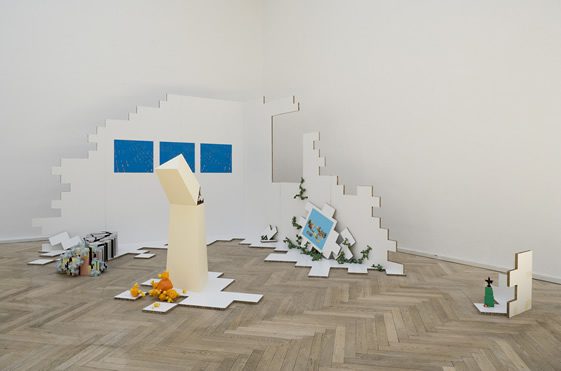
The Shape of Things to Come
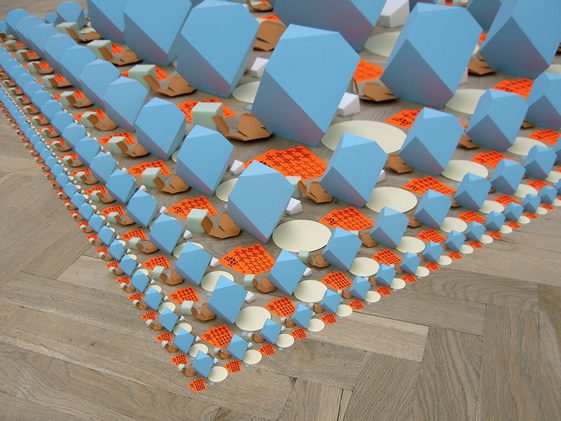
Exposed Superstructure
Tommy, where are you from, and where do you live/work from now?
I was born in Copenhagen, where I also studied art. I have been living in Berlin for the last nine years.
When were you first attracted to making art?
When I was a teenager, I thought that I wanted to become a graphic designer or an illustrator and I made a lot of pictures in different media. It was all very graphic at the same time as playing with the representation of the 2D/3D on the surface of the paper. I noticed that other people were making very similar things on canvas and showing it in art exhibitions. Then I ended up in an art academy.
The top 3 creatives who’ve inspired you…
I have drawn inspiration from many different people over the years, and this has also changed as I have discovered more artists and learned to understand other artists. I have been inspired by a diverse range of creatives, such as fine artists (throughout art history), architects, writers, etc. Also people that I know and have around me. I do not think that I can decide on a top 3!
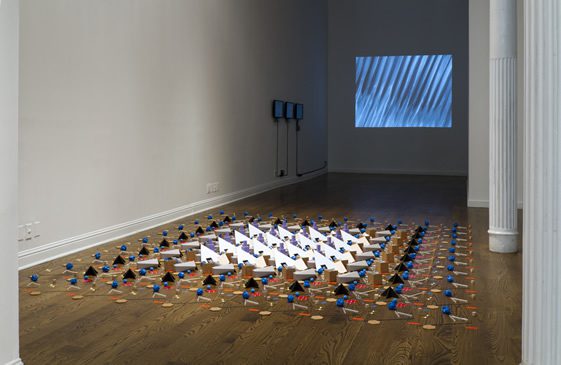
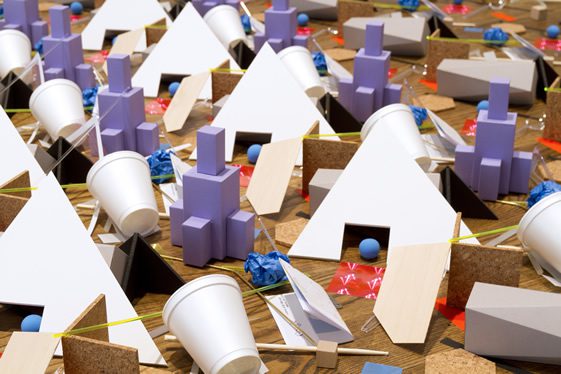
Structured Studio Situation (New York)
Order seems to play a large part in your aesthetic, can you tell us a little about your style and where it comes from?
I suppose that I have a need to order objects and I really like the aesthetics of mathematical models. I often tell myself that I want to be more messy in my work, that I should loosen up and make things easier for myself. But in the end, I am not satisfied with the results, it is somehow not enough, and I end up constructing systems to control the mess.
In one of my recent works – Proportional Material Arrangement for Two Rooms – I showed in a gallery which had two rooms, a larger front room and a smaller back room. I discovered that the relation in size between the two rooms proportions were very close to the relation between the standard paper A and B sizes (relation between A3 and A4, for example). In the larger front room, I placed a casual arrangement of papers, cardboards and sketch books –lying flat, folded, rolled, etc. These were all materials that I had bought in stationary and art shops, following the rule that I could only chose materials that came in two sizes (A2 and A3, or B1 and B2, etc.) The sculptural arrangement was photographed and removed directly after.
In the smaller back room, I made an exact reconstruction of the casual arrangement using the same materials but only one size smaller (A4 instead of A3, for example), so that the arrangement would have the same proportions in the space as the larger arrangement had to its space. The photograph of the arrangement in the large space was hanging on the wall next to the small arrangement, and only through this piece of documentation was it possible to understand that the pieces of paper and cardboard lying around casually were in fact carefully arranged.
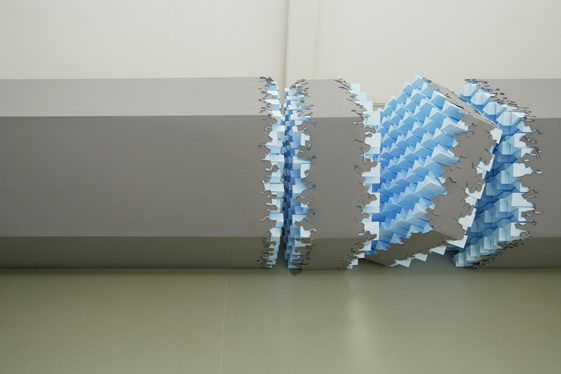
From Here to Then and Back Again
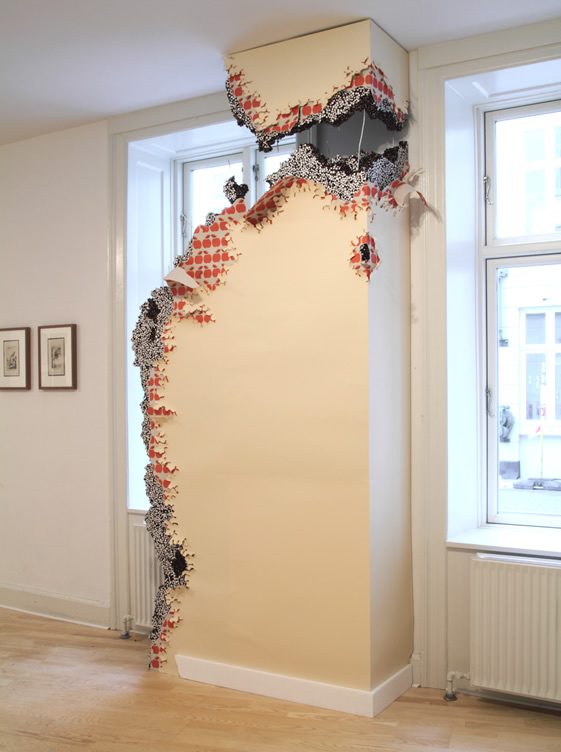
Nostalgisk Konstruktion
If you weren’t an artist, what would you be doing?
I do really not know, which is probably the reason why I continue making art.
Your guilty pleasure…
I do not feel any guilt!
What is the best piece of advice you’ve been given?
“Not every work you make can be a masterpiece”
Where do you feel most inspired?
Nowhere in particular.
What’s your greatest fear?
My greatest fear is that I will end up as a conservative, boring artist repeating the same old things over and over again. This was also the theme of my exhibition Tommy Støckel’s Art of Tomorrow, where I tried to predict the logical possibilities for a future development in my sculptures. These predictions included both good and bad futures, meaning the ones that I might hope for as well as the ones I fear.
What’s next for Tommy Støckel?
I am preparing a solo show for the exhibition space Jacob’s Island in London, which will open at the end February. It is a project developed specifically for the space and I am trying to use what usually is seen as a hassle –the art transport– as a tool to make decisions for the show.
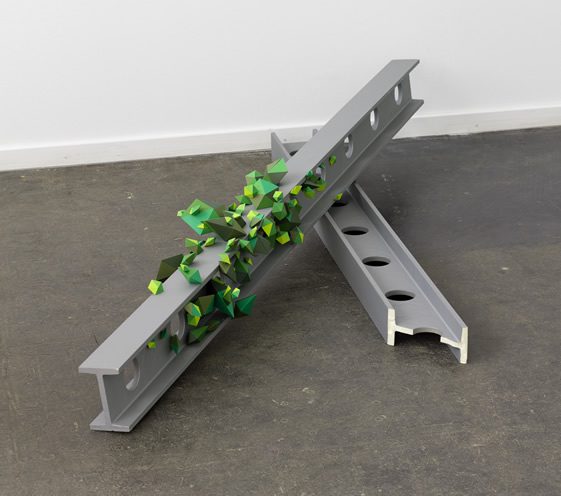
The Take-Over
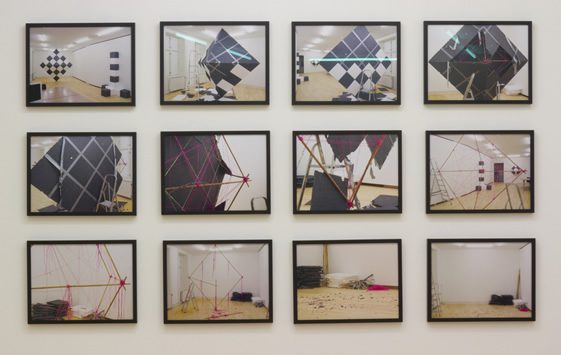
What Already Was
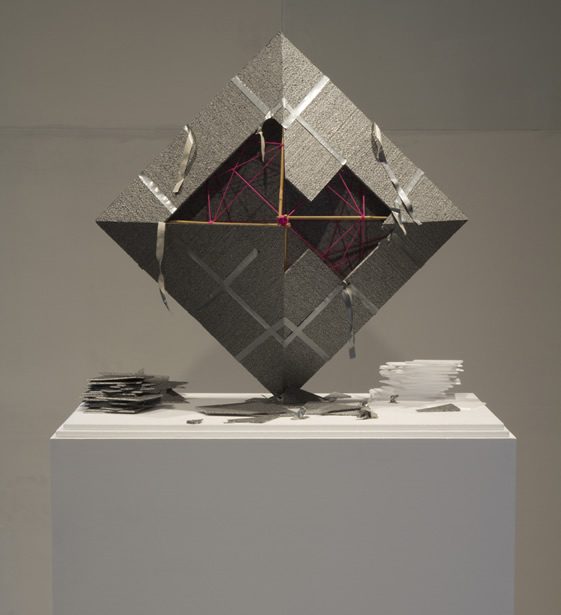
Reconstruction of a Moment (05.07.2010, 4.24PM)
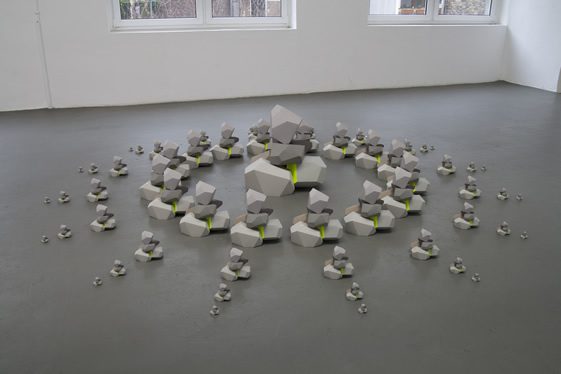
Model for Early Pyramid
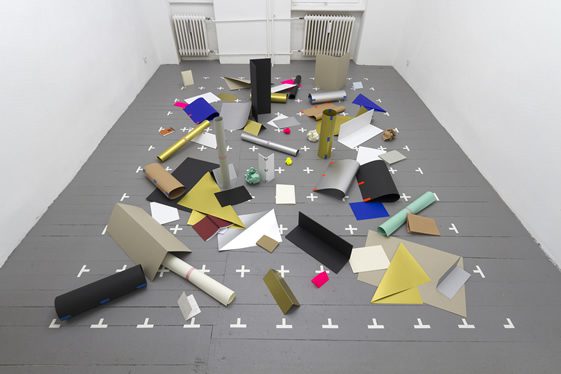
Proportional Material Arrangement for Two Rooms
(Installation view)
